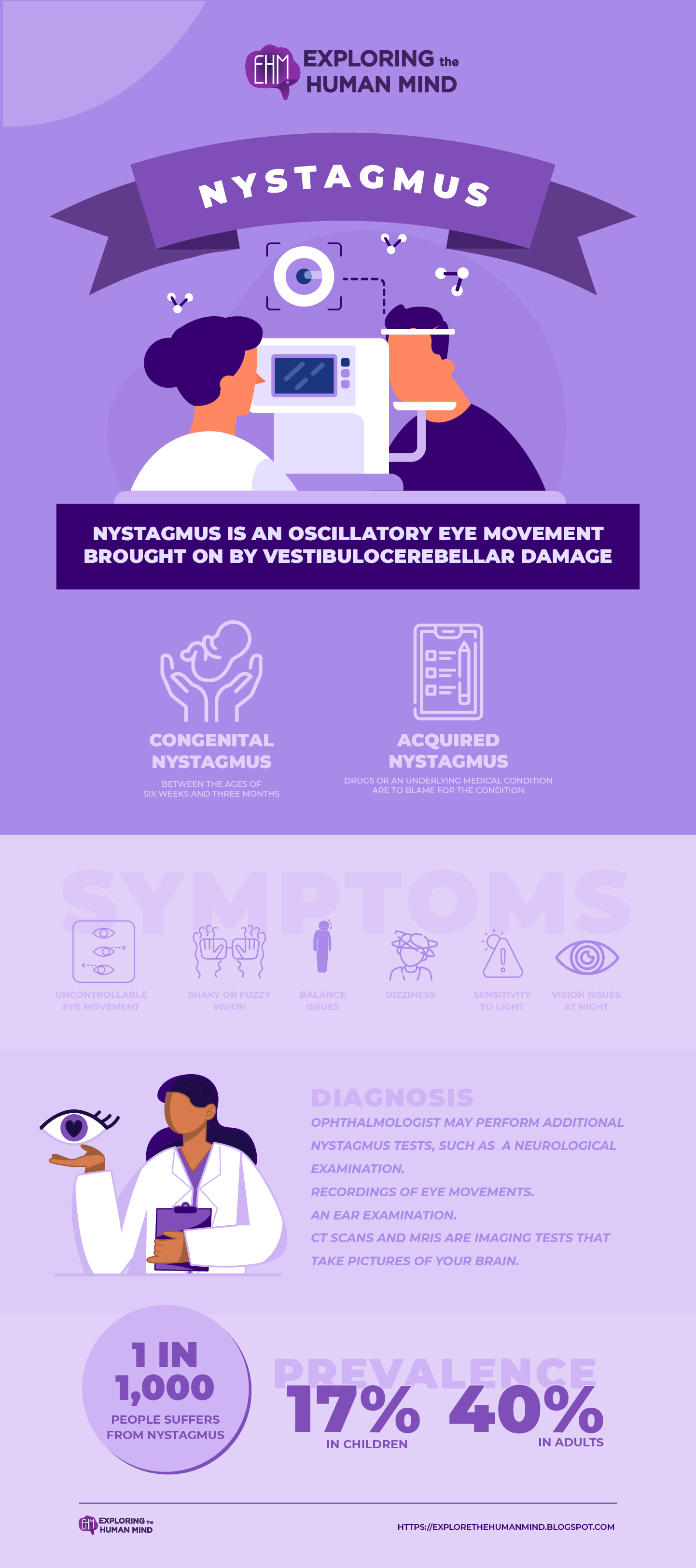Nystagmus
Types
Adults and children can both experience nystagmus. There are two: acquired and congenital.
Congenital nystagmus
Between the ages of six weeks and three months, symptoms in infants with this condition begin to appear. Congenital nystagmus is a form of nystagmus that is present from birth. Sometimes it is passed down from parents to children, though the precise reason why isn't always known. Congenital nystagmus in children typically affects both eyes. Vision blurring is the primary symptom.
Acquired nystagmus
Acquired nystagmus, as opposed to congenital nystagmus, appears later in life. Usually, drugs or an underlying medical condition are to blame for the condition. The vision of adults who have acquired nystagmus is described as "shaky."
Symptoms
One or both eyes may be affected by nystagmus symptoms:
- uncontrollable eye movement is one of the most prevalent warning signs
- vision that is shaky or fuzzy
- balance issues
- dizziness
- sensitivity to light
- issues with vision at night
You might hold your head tilted or turned if you have nystagmus. When you can't maintain a steady gaze, this helps you focus better and makes things appear clearer.
Diagnosis
Nystagmus is typically identified by an ophthalmologist. They'll check your eyes, test your vision, and inquire about your symptoms. They'll also look for conditions like strabismus, cataracts, or problems with the retina or optic nerve that could be connected to nystagmus.
Your ophthalmologist may perform additional nystagmus tests, such as:
- a neurological examination
- recordings of eye movements
- an ear examination
- CT scans and MRIs are imaging tests that take pictures of your brain
Nystagmus can make everyday tasks more difficult. It may even limit the types of jobs and hobbies you can pursue in some cases. Nystagmus is rarely completely gone, but it can improve over time. Your healthcare provider can assist you in locating a treatment that is effective for you.
Facts
One in every 1,000 people suffers from nystagmus.
Pathologic nystagmus is estimated to affect 24 people out of every 10,000, with a slight preference for people of European ancestry. According to the same author, the prevalence of infantile/pediatric nystagmus is 17 per 10,000. It has been reported that it is as low as 6.7 per 100,000 people.The prevalence of acquired nystagmus in children is estimated to be 17%, compared to 40% in adults. To determine the etiology of all forms of presumed acquired nystagmus, additional diagnostic workup is required.

vectors by Freepick; graphic design by Vadot
Reference:
Disorders of the Motor System (Section 3, Chapter 6) Neuroscience Online: An Electronic Textbook for the Neurosciences | Department of Neurobiology and Anatomy - The University of Texas Medical School at Houston. (2020). Tmc.edu. https://nba.uth.tmc.edu/neuroscience/m/s3/chapter06.html
Patel, V., & Zee, D. S. (2014). The cerebellum in eye movement control: nystagmus, coordinate frames and disconjugacy. Eye, 29(2), 191–195. https://doi.org/10.1038/eye.2014.271
Clinic, C. (2021). Nystagmus: Definition, Causes & Treatment - Cleveland Clinic. Cleveland Clinic. https://my.clevelandclinic.org/health/diseases/22064-nystagmus#:~:text=Nystagmus%20(ni%2Dstag%2Dmuhs,a%20circle%20(rotary%20nystagmus).






Comments
Post a Comment